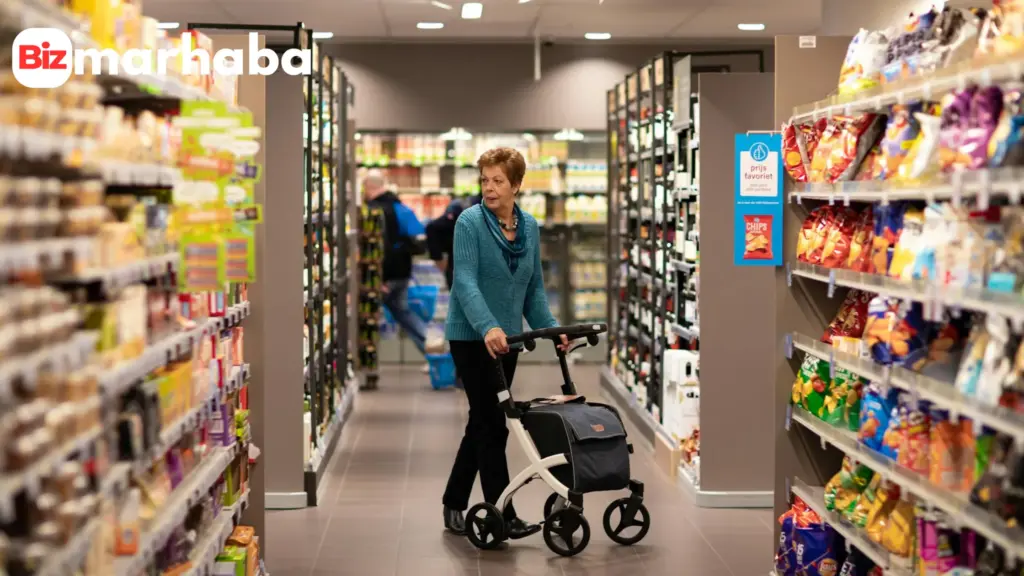Grocery shopping in the UK can feel daunting at first, but a little planning makes it simple. This article gives a practical grocery shopping guide for newcomers and regulars alike. Read on for ways to save time and money, both in-store and online.
Make a list and check your cupboards. Set a realistic budget. A list helps avoid impulse buys and keeps waste low. Students and families benefit most from planning. Planning meals and creating a shopping list tied to recipes helps students, families, and anyone shopping efficiently.
The UK market offers big chains, discounters and convenience stores. Tesco, Sainsbury’s, Asda and Morrisons cover most needs. Discounters such as Aldi and Lidl sell basics more cheaply. If price is your priority, the cheapest grocery shop in the UK is often one of the discounters, led by Aldi and Lidl in recent price comparisons. Which? tracks this monthly and shows how discounters compare to traditional chains.
Supermarkets give variety and longer opening hours. Discounters focus on low prices and a tighter product range. Specialist stores and markets sell fresh produce and ethnic ingredients. Expat guides note that choosing a store depends on location and needs. For instance, students often pick nearby convenience stores for emergencies, and larger families use big supermarkets for weekly bulk buys.
When planning a bigger shop, check whether the cheapest grocery shop in the UK near you stocks the brands and pack sizes you need.
Shopping In-Store and Online

Visit outside rush hours for quiet aisles and fresh stock. Compare unit prices, not just sticker prices. Buy own-label products to cut costs. Use loyalty cards like Tesco Clubcard or Sainsbury’s Nectar for extra discounts. Loyalty schemes and unit-price checks are simple ways to save.
Most major supermarkets offer a full online service with delivery or click-and-collect. To order, create an account, add items to your basket, choose a delivery slot and pay. Repeat orders and saved shopping lists speed up future shops. Careline’s step-by-step guide explains this process clearly and notes delivery cost rules for different chains.
Choose eco slots if you can wait; they can be cheaper. Delivery passes reduce fees if you shop often. When you buy heavy items, delivery usually saves time.
Always use official supermarket websites or apps. Save payment cards securely in your account and look for HTTPS in the site address. If an item runs out, many retailers offer substitution preferences—opt in or out depending on whether you want similar products. Set delivery notes clearly so drivers can leave orders securely. For first-time online shoppers, ask for help or use telephone ordering if available. Many people now choose online grocery shopping in the UK during busy weeks. For regular orders, online grocery shopping in the UK saves time.
Money-Saving Tactics
Supermarkets appear on takeaway apps and quick-delivery services. These platforms can supply last-minute essentials. They often cost more per item, but they save time on urgent days. Keeping a basic cupboard of essentials helps reduce reliance on premium app deliveries. Reserve these apps for emergencies or small orders.
Buy seasonal produce and larger packs for staples. Check apps for digital coupons and loyalty prices. Regular price comparisons can help you see where baskets cost the least and guide you to the best store.
Sign up for supermarket cards and apps. They often unlock member-only reductions and digital coupons. Use points to reduce fuel or future grocery bills. This grocery shopping guide recommends tracking points and targeted offers rather than chasing every sale. Keep an eye on loyalty-only prices when you compare baskets.
If you need help with online ordering, many supermarkets provide telephone ordering or assisted services. Specialist guides outline step-by-step support and alternative formats for customers who need them. If digital confidence is low, ask a friend or use supermarket phone lines to place the first shop. These services make online ordering achievable for more people.
Practical Tips for Every Household
If you prefer to pick up rather than wait at home, click-and-collect saves delivery fees. Some retailers offer same-day or rapid delivery for a fee. Decide based on urgency, cost and how much you buy. Consider the trade-offs between delivery and collection to determine which option makes the most sense.
Check “use by” and “best before” dates when buying reduced items. Handle chilled and frozen items last so they stay cold on the journey home. Label and rotate stock at home to prevent waste. These small habits protect health and money. Cooking in small batches and freezing leftovers is a practical strategy for students and anyone managing a household efficiently.
Keep a running inventory on your phone. Set calendar reminders for weekly shops. Combine trips with other errands to save time. If you have dietary needs, set profiles in the supermarket app where possible; this flags unsuitable products. Careline highlights dietary profiles as a handy feature at several chains.
Prioritise staples first. Bread, pasta, legumes and frozen vegetables last longer and cost less per meal. Watch local discount shelves and reduced-to-clear sections. Some students and families find discounters that deliver the lowest prices for basics. If you must balance cost and variety, split your shop between a discounter and a larger supermarket.
Making the Right Choices

Bring reusable bags. Choose loose fruit and veg when possible to minimise packaging. Pick products with minimal transit when you can. Small choices add up over time.
If you want the cheapest grocery shop in the UK close to your home, check recent price comparisons and test a small basket. Which? publishes monthly comparisons that show discounters often win on small baskets and traditional supermarkets sometimes beat discounters on larger, brand-heavy lists. Try a small test shop and compare totals in-store or online. This hands-on check takes little time and usually reveals where you will save the most.
Big supermarkets and specialist stores cater to diverse tastes. Expatica recommends exploring local markets and ethnic shops for authentic ingredients at reasonable prices. If you live near a city, you will often find dedicated stores that beat supermarkets on specialist items. Mix and match outlets to balance price and authenticity.
If you are new to the UK, learn the store layouts in your area. Split your shop by using discounters for staples and a larger store for occasional treats or niche items. Keep a small emergency kit of basics to avoid costly express deliveries. These easy habits reduce stress and keep costs down. This advice helps anyone starting to shop for groceries in the UK.
Quick checklist before you leave or click:
- Make a list tied to recipes.
- Check loyalty offers and apps.
- Compare unit prices.
- Consider discounters for basics.
- Choose delivery or click-and-collect sensibly.
- Store perishables properly on return.
Conclusion
Shopping for groceries in the UK becomes routine after a few trips. Decide whether price, range or convenience matters most. Use loyalty schemes and online tools to save time and money. With a little practice, you will shop faster and smarter. This grocery shopping guide should make your next shop simpler.








